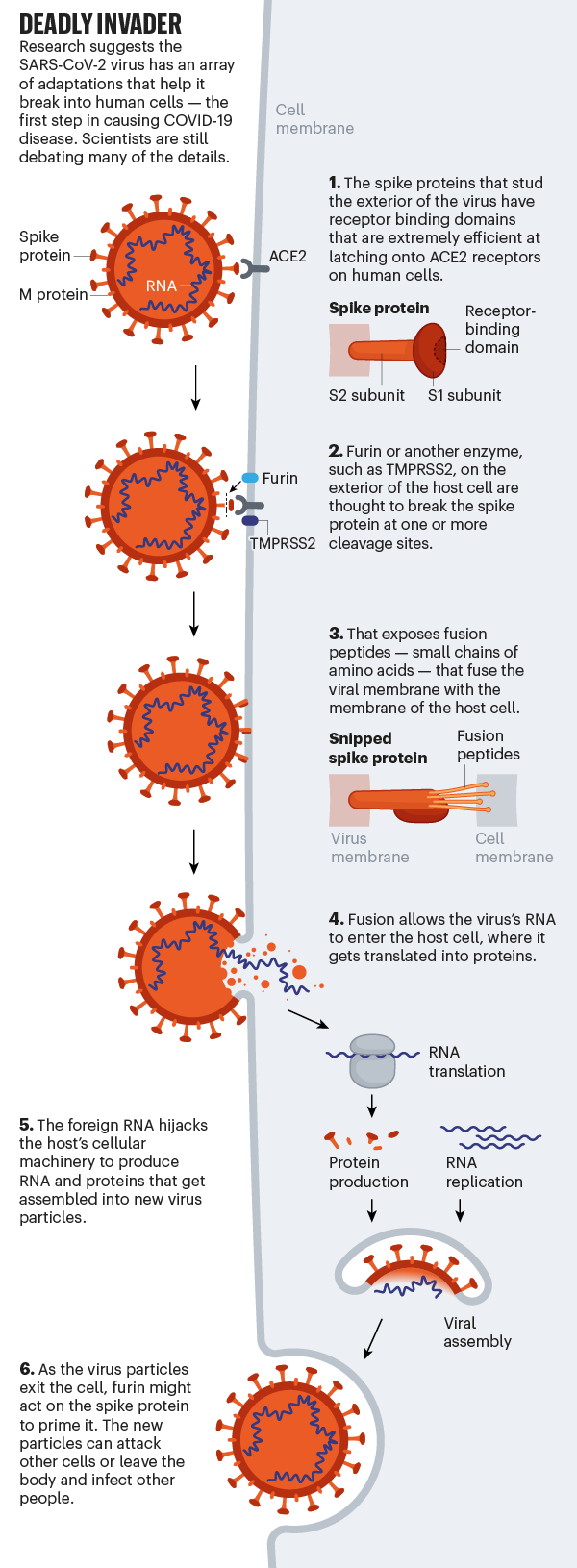Serine proteases are known to be involved in many physiological and pathological processes. Rarely an animal coronavirus can infect humans.
The accompanying Student Worksheets incorporate concepts and information from the animations.

. The body can easily fight off some pathogens but others are. Viruses contain a small piece of. Coronaviruses are a large family of different viruses and have coexisted with humans for a long time.
Astronomers identified a nearby star whose sunspot cycles appear to have stopped. There are two types of antibody -. Explain how they plan to interpret data from the aims efforts.
Millions of different viruses may exist but researchers have only identified about 5000 types to date. Members of the coronavirus family are common in many different species of animals including camels cattle cats and bats. Depending on your situation decide which items are important for you.
Describe how to address potential pitfalls with contingency plans. Coronavirus entry into host cells is an important determinant of viral infectivity and pathogenesis 13 14It is also a major target for host immune surveillance and human intervention strategies 15 16To enter host cells coronaviruses first bind to a cell surface receptor for viral attachment subsequently enter endosomes and eventually fuse viral and. Without a functional immune response people with PIDDs may be subject to chronic debilitating infections such as Epstein-Barr virus EBV which.
Human coronaviruses were discovered in the 1960s using two different methods in the United Kingdom and the United States. Describe expected outcomes for each aim. This gene was demonstrated to.
Coronaviruses are common in different animals. Studying this star might help explain the unusual period from the mid 1600s to the early 1700s when our Sun paused. Some of them can cause colds or other mild respiratory nose throat lung illnesses.
Explain their areas biology. Of coronaviruses like SARS-CoV-2 how they infect humans and replicate inside cells how the viruses evolve methods used to detect active and past SARS-CoV-2 infections and how different types of vaccinations for SARS-CoV-2 prevent disease. Show how the aims relate to one another.
When a virus enters the human body the immune system produces antibodies that attack the invading pathogen. There are many different kinds of coronaviruses. Rarely animal coronaviruses can infect people and then spread from person to person as occurred with MERS-CoV.
Using existing data on the RNA found in different types of cells the researchers were able to search for cells that express the two proteins that help the SARS-CoV-19 virus enter human cells. The leap from animals to humans however is new. The human bodys immune system acts as a defense against pathogens.
This is how he explains it. Learn more about coronaviruses here. Primary immune deficiency diseases PIDDs are rare genetic disorders that impair the immune system.
They found subsets of cells in the lung the nasal passages and the intestine that express RNA for both of these proteins much more than other cells. More than 50 of all common colds are caused by human rhinoviruses HRVs and coronaviruses HCoVs1 2 3 The common cold includes rhinitis and pharyngitis as well as sneezing hoarseness and cough4 5 The illness is usually self-limited in healthy people but can be associated with complications in individuals who suffer from heart or lung. The encoded protein contains a type II transmembrane domain a receptor class A domain a scavenger receptor cysteine-rich domain and a protease domain.
This gene encodes a protein that belongs to the serine protease family. Kendall Malcolm Bynoe and David Tyrrell working at the Common Cold Unit of the British Medical Research Council collected a unique common cold virus designated B814 in 1961.

Viruses What Are They And What Do They Do

Profile Of A Killer The Complex Biology Powering The Coronavirus Pandemic

0 Comments